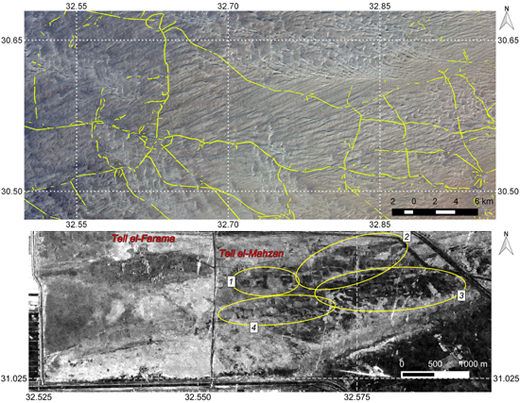Feature Extraction in the North Sinai Desert Using Spaceborne Synthetic Aperture Radar: Potential Archaeological Applications
Abstract
Share and Cite
Stewart, C.; Montanaro, R.; Sala, M.; Riccardi, P. Feature Extraction in the North Sinai Desert Using Spaceborne Synthetic Aperture Radar: Potential Archaeological Applications. Remote Sens. 2016, 8, 825. https://doi.org/10.3390/rs8100825
Stewart C, Montanaro R, Sala M, Riccardi P. Feature Extraction in the North Sinai Desert Using Spaceborne Synthetic Aperture Radar: Potential Archaeological Applications. Remote Sensing. 2016; 8(10):825. https://doi.org/10.3390/rs8100825
Chicago/Turabian StyleStewart, Christopher, Rosanna Montanaro, Maura Sala, and Paolo Riccardi. 2016. "Feature Extraction in the North Sinai Desert Using Spaceborne Synthetic Aperture Radar: Potential Archaeological Applications" Remote Sensing 8, no. 10: 825. https://doi.org/10.3390/rs8100825
APA StyleStewart, C., Montanaro, R., Sala, M., & Riccardi, P. (2016). Feature Extraction in the North Sinai Desert Using Spaceborne Synthetic Aperture Radar: Potential Archaeological Applications. Remote Sensing, 8(10), 825. https://doi.org/10.3390/rs8100825






